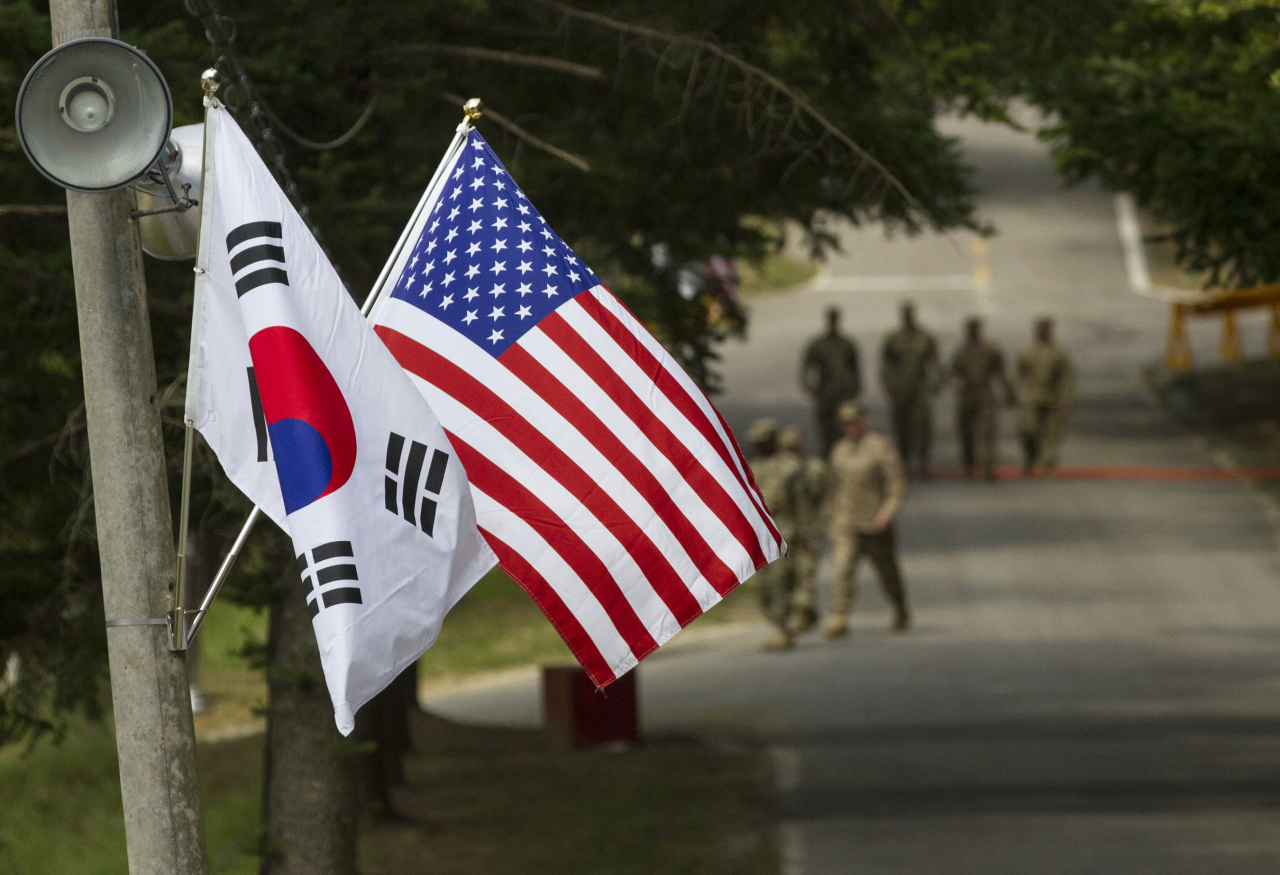S. Korea, US to stage exercise simulating N. Korea’s nuclear use
By Ji Da-gyumPublished : Feb. 17, 2023 - 17:52

The discussion-based TTX led by the alliance’s high-level Deterrence Strategy Committee will be conducted on Feb. 22 at the Pentagon in Washington, DC, South Korea’s Defense Ministry said Friday.
The DSC TTX has been co-organized by South Korea’s Defense Ministry and the US Defense Department to discuss and develop contingency plans and response procedures in the event of a nuclear crisis on the Korean Peninsula.
But the upcoming TTX has a different significance as Seoul and Washington will put their heads together to specifically seek their optimal policy and military options in case of North Korea’s use of nuclear weapons.
South Korean Defense Minister Lee Jong-sup and US Defense Secretary Lloyd Austin in November agreed to include the nuclear use scenario in response to the recent shift in North Korea’s nuclear strategy and advancing nuclear capabilities. North Korea’s rubber-stamp parliament passed a new law that allows a preemptive nuclear strike under certain circumstances in September 2022, pronouncing aggressive and first-use nuclear doctrine.
During the upcoming TTX, South Korea and the US will focus on discussing “how to manage the crisis and take military countermeasures in scenarios of North Korea posing nuclear threats and using nuclear weapons,” according to the Defense Ministry.
South Korea and the US will also have in-depth discussions on various ways to strengthen the viability of US extended deterrence in response to escalating and direct threats from North Korea. Extended deterrence is the US’ commitment to deter or respond to coercion and external attacks on US allies and partners with the full range of its military capabilities, including nuclear weapons.
The outcomes of the DSC TTX will be reflected in the South Korea-US Tailored Deterrence Strategy, which Seoul and Washington agreed to update and revise before holding the South Korea-US Security Consultative Meeting, to be held later in the year. The TDS is a strategic guideline on the alliance’s deterrence measures and response to better prepare for North Korea’s advancing nuclear and missile threats. However, it has yet to be updated since the allies first signed on in 2013.
The upcoming DSC TTX will be held around three months after the South Korean and US defense chiefs in November agreed to hold the DSC TTX annually. Seoul and Washington have irregularly staged seven DSC TTXs from 2011 to 2021.
South Korean Deputy Minister for National Defense Policy Heo Tae-keun, US Deputy Assistant Secretary of Defense for East Asia Siddharth Mohandas, Deputy Assistant Secretary of Defense for Nuclear and Countering Weapons of Mass Destruction Policy Richard Johnson and other senior officials will participate in the DSC TTX.
The South Korean and the US delegations will also tour the Kings Bay Naval Submarine Base in Georgia on Feb. 23, which is the east coast home port of Trident nuclear-powered submarines. The tour notably marks the first co-visit by South Korean and US officials to a US base for nuclear-powered submarines.
South Korea’s Defense Ministry underscored that the upcoming tour to the navy base hosting nuclear-powered submarines, which is one component of the US nuclear triad, came after the previous co-trips to the US military bases housing other parts of the US nuclear triad.
The US nuclear triad consists of intercontinental ballistic missiles, nuclear-armed ballistic missile submarines and nuclear-capable strategic bombers.
The US and South Korean officials previously visited the US bases for ICBMs and strategic bombers on the occasion of bilateral high-level defense talks.
The fifth DSC TTX was held at the Vandenberg Space Force Base on the central coast of California, which was headquarters to Space Launch Delta 30 in 2016. The Delta supports development and evaluation of all ICBMs as well as Missile Defense Agency test and operations. Lee and Austin also toured Joint Base Andrews outside Washington for a briefing and tour of a nuclear-capable B-52 Stratofortress bomber and a B-1B Lancer bomber in November.



















![[Today’s K-pop] Treasure to publish magazine for debut anniversary](http://res.heraldm.com/phpwas/restmb_idxmake.php?idx=642&simg=/content/image/2024/07/26/20240726050551_0.jpg&u=)